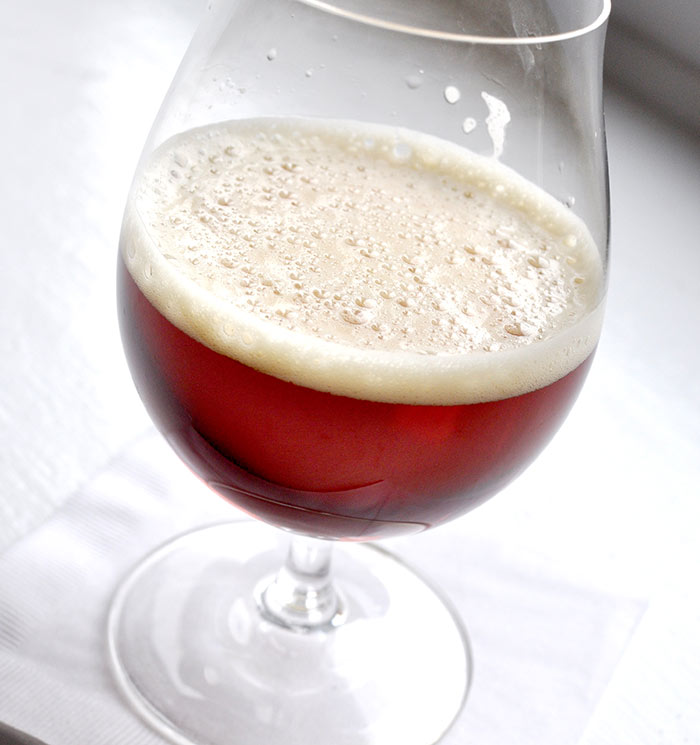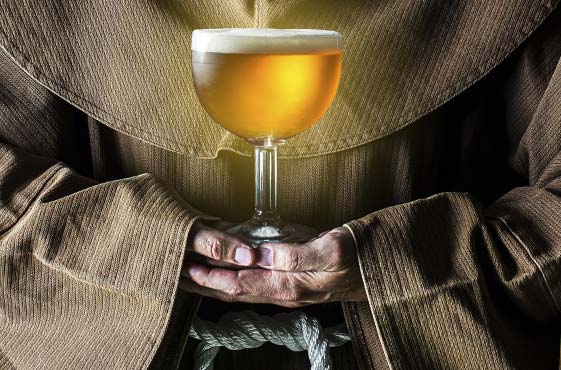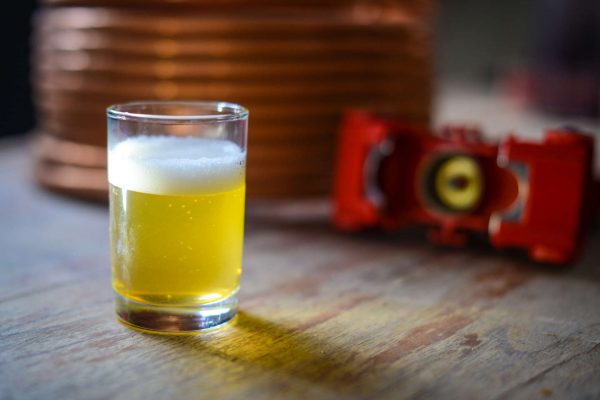
Trappists, more formally known as the Order of Cistercians of the Strict Observance, are a Roman Catholic contemplative order with history that stretches back hundreds of years and roots long before that.
The monasteries of Trappist monks and nuns are affiliated with the larger Cistercian family, which traces its origin back to the late 11th century. In 1098, Saints Robert, Alberic and Stephen founded the monastery of Citeaux outside of Dijon, France with the purpose of refreshing the institutional forms of monastic life and returning to a stricter following of the the Rule of Saint Benedict.
The Rule of Saint Benedict, written in the 6th century, maps out the expectations of Trappist monks and nuns with an emphasis on authentic poverty and simplicity in the liturgy, manual work and non-involvement in secular affairs. The rule dictates the day-to-day life of Trappists, including much spiritual reflection and observance along with a balance of work, reading and study.
Additional reforms occurred throughout the history of the Trappists, including one near Normandy, France during the 17th century led by the Abbot of La Trappe in hopes of returning to a more purer following of the Rule of Saint Benedict. This is how “Trappist” name came to be.
Today, while there has been an increase in Trappist monasteries around the world, the total number of monks and nuns in the Order has been decreasing. Without Trappist monasteries, there are no Trappist breweries, and without Trappist breweries, there is no Trappist beer.

The Trappist Brewery
Beer is among one of the most well-known Trappist-produced goods used to support the monastery producing the beer and fund its charitable endeavors. It’s important to note that the beer is not intended to turn a profit, but rather to generate income that can be used to fund the monastery and local community.
It is believed that beer was being brewed in monasteries as early as the 6th century. In its earliest history, Trappist beer acted as a form of potable water. Eventually, Trappist beer was made on larger scales with the intent of sharing it outside of the monastery walls. In many instances, and even still to this day, many Trappist beers must be purchased on the grounds of the Trappist brewery or at nearby markets. Some even say that it is the Trappist brewers who started spreading their knowledge of beer and brewing procedures that helped spur the growth of secular commercial brewing ventures.
But despite the prominence of beer in the Trappist community, it is important to note that monks always put religion first over everything else–even beer. In other words, it’s always “an abbey with a brewery, and not the other way around.” The beers being made in Trappist breweries are intended to nourish the Trappists and their visitors, and also support the financial needs of the monastery and its charitable efforts.
In many instances, the monks of a monastery don’t have the time to dedicate to both the Rule of Saint Benedict and running a brewery, so it is not uncommon for a monk to be appointed to oversee brewing operations, but the actual day-to-day brewery tasks are taken on by hired, secular help.
The International Trappist Association
In order to prevent non-Trappist commercial companies from using the Trappist name, eight Trappist abbeys got together and formed the International Trappist Association (ITA) in 1997. To become a member of the ITA, prospective abbeys must go through a rigorous application and evaluation period.

ITA-recognized monasteries are allowed to use the “Authentic Trappist Product” logo to legally and legitimately identify themselves as a Trappist abbey that produces Trappist goods. Furthermore, authentic Trappist products must abide by certain criteria to use the logo.
The following is the strict criteria ITA-recognized breweries (see list) must follow:
- The beer must be brewed within the walls of a Trappist monastery, either by monks themselves or under their supervision.
- The brewery must be of secondary importance within the monastery and it should witness to the business practices proper to a monastic way of life.
- The brewery is not intended to be a profit-making venture. The income covers the living expenses of the monks and the maintenance of the buildings and grounds. Whatever remains is donated to charity for social work and to help persons in need.
Key Dates in Trappist and Monastery Brewing
The following timeline is taken from Brew Like a Monk: Trappist, Abbey and Strong Belgian Ales and How to Brew Them by Stan Hieronymus.
| 530 | The rule of Saint Benedict is written and to this day remains the reason why monks brew and sell beer. |
| 750 | Charlemagne and his followers promote the Benedictine way of life and monastery brewing. |
| 820 | The Saint Gall Monastery brewery plan is drawn, providing a blueprint for other monasteries. |
| 1098 | The Order or Cistercians is founded, promoting a stricter set of rules than the Benedictines. |
| 1132 | Cistercian monks resurrect the Orval Monastery abandoned by the Benedictine order. |
| 1464 | Cistercian monks take over an abbey at Rochefort previously occupied by nuns. |
| 1656 | Seeking a purer living of the rule of Saint Benedict, a stricter order of Cistercians begins in La Trappe, becoming known as Trappists. |
| 1790 | The French revolutionary government suppresses all monasteries, confiscating their property. |
| 1802 | Monks fleeing France with the idea of heading to America found a Trappist monastery at Westmalle. |
| 1830 | Belgium declares its independence from the Netherlands. |
| 1836 | Monks at Westmalle begin brewing. |
| 1839 | Brewing begins at Westvleteren, established as a monastery five years earlier. |
| 1844 | Monks from Westmalle start a monastery at Achel, and brewing begins in 1852. |
| 1850 | Monks from Westvleteren found the abbey at Chimay, and in 1862 start brewing beer and selling it to the surrounding community. |
| 1884* | The Dutch brewery Brouwerj de Koningshoeven (La Trappe brand) was founded within the walls of Koninshoeven Abbey. |
| 1899 | Rochefort resumes brewing twelve years after monks from Achel re-established the abandoned monastery. |
| 1919 | The government prohibits the sale of spirits in bars and other public places, helping create demand for stronger beers. |
| 1922 | Westmalle begins using a dark sugar syrup (also called “candi sugar”) in Westmalle Dubbel, making the beer stronger without bloating its body. |
| 1925 | Chimay trademarks ADS (Abbaye de Scourmont), the first Trappist trademark. |
| 1932 | Orval, rebuilt in 1926, resumes brewing with a brand new recipe. |
| 1934 | Westmalle completes construction of a modern brewery, begins selling Westmalle Tripel, the first pale Trappist beer. |
| 1946 | The abbot at Westvleteren decides to de-emphasize brewing, and a deal is struck to have Saint Sixtus beer brewed under contract. |
| 1948 | Father Theodore isolates the famous Chimay yeast, brews the famous Blue/Grand Reserve as a Christmas beer. |
| 1955 | Monks at Rochefort begin brewing Speciale, now called Rochefort 8 and the last new beer introduced by Rochefort |
| 1962 | A trade court in Ghent rules that only Trappist monasteries can use the appellation Trappistenbier. |
| 1992 | Westvletern ends a 46-year contract brewing deal with Saint Bernardus and reassumes control over all the beer it sells. Saint Bernardus begins selling beers under its own name. |
| 1997* | The International Trappist Association (ITA) was formed, and beers brewed in Trappist breweries began using the “Authentic Trappist Product” logo. |
| 1998 | Achel resumes brewing. |
| 2013* | Saint Joseph’s Abbey in Massachusetts opens Spencer Trappist Brewery, marking the first American Trappist brewery. |
*Not included in Brew Like a Monk
Sources: Brew Like a Monk: Trappist, Abbey and Strong Belgian Ales and How to Brew Them by Stan Hieronymus; Great Beers of Belgium (Sixth Edition) by Michael Jackson; International Trappist Association website; Order of Cistercians of the Strict Observance website; The Oxford Companion to Beer by Garrett Oliver et al.



Share Post